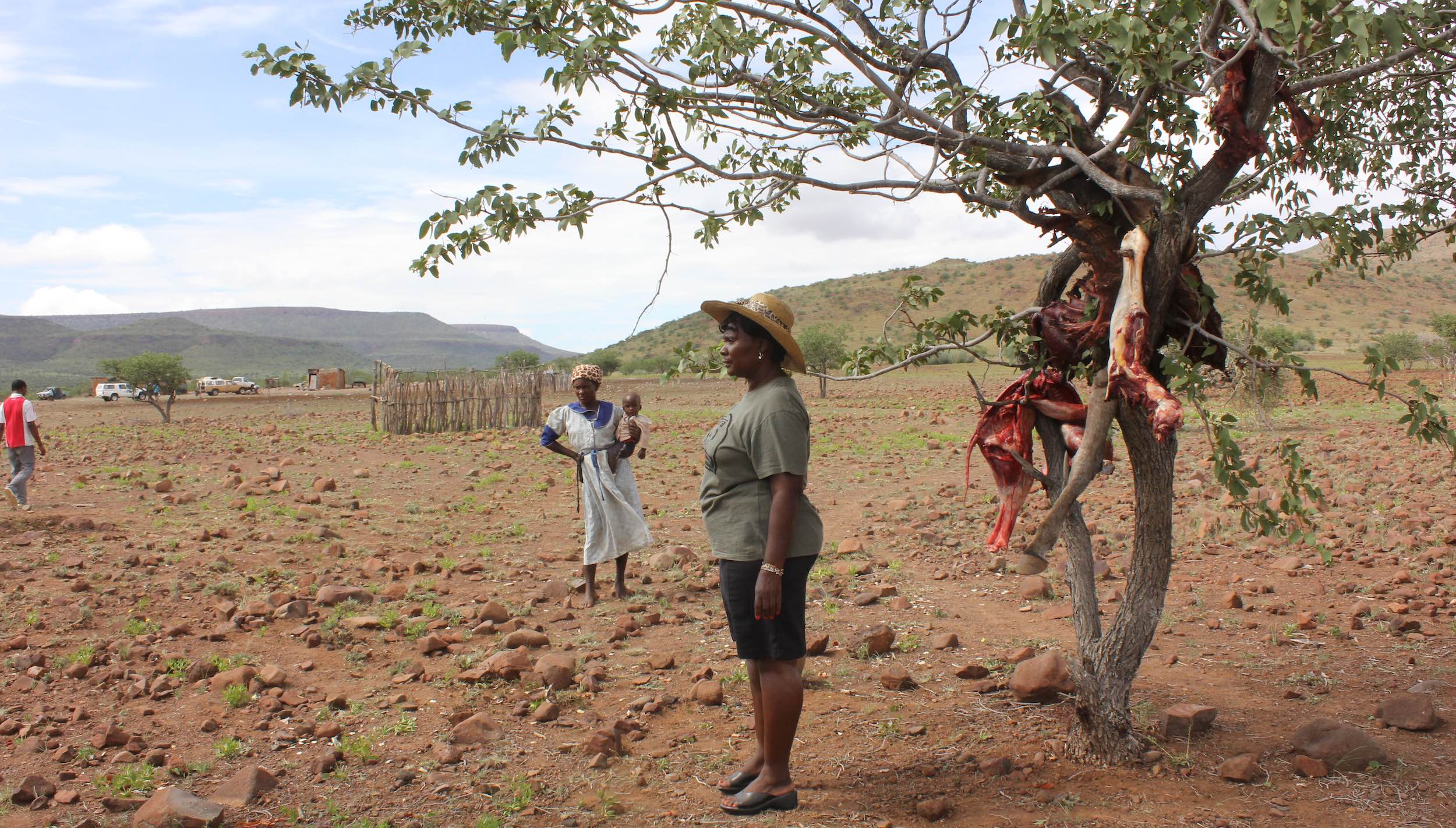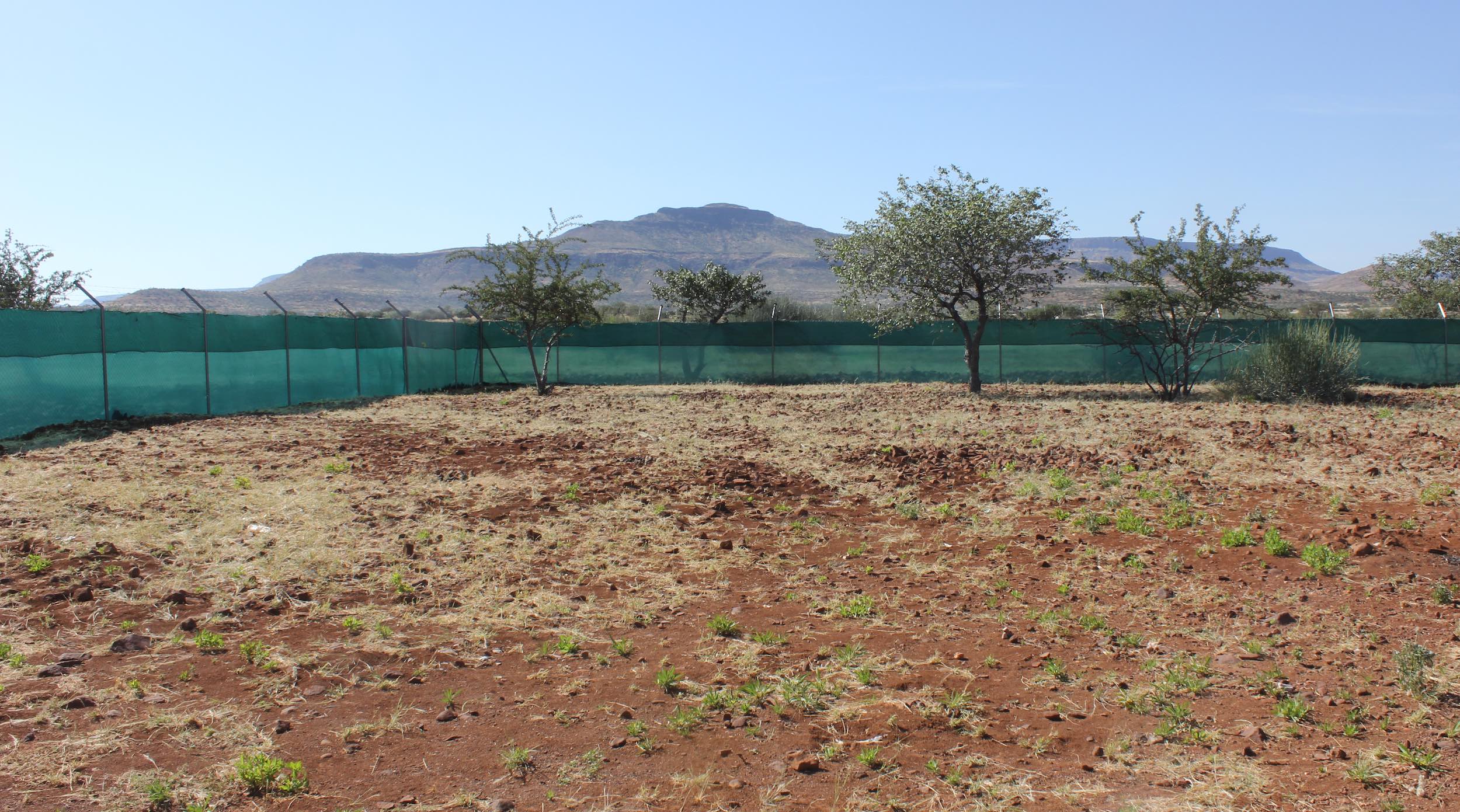
Human-wildlife conflict in communal conservancies
The communal conservancy programme has led to the successful recovery of wildlife populations in many parts of Namibia, especially in the north-western Kunene and Erongo Regions and in the north-eastern Zambezi Region. People living in these conservancies are mostly farmers who raise livestock and/or grow crops. While the conservancy system allows tangible benefits like jobs and meat to reach rural communities, the increasing populations of large carnivores and herbivores may pose a threat to the livelihoods of people living in conservancies by killing livestock or damaging crops.
People living in conservancies may experience significant costs associated with wildlife; if these costs are not reduced or covered then their support for the conservancy concept may wane. Yet the conservation of threatened species like lions, African wild dogs, cheetahs and elephants can be seen as a service to the nation and the world. People who are willing to tolerate losses to these globally valued animals should not be expected to bear these costs on their own.

What is the Human-Wildlife Conflict Self Reliance Scheme (HWCSRS)?
In light of the above, the Ministry of Environment, Forestry and Tourism (MEFT) established the HWCSRS as a means of assisting people living on State land within and outside communal conservancies and resettled farmers to address human-wildlife conflict. This Scheme is designed to partially offset farmers for verified losses to crops or livestock from large carnivores and herbivores (it excludes losses caused by smaller wildlife like black-backed jackals, snakes, rodents, birds and insects). It also provides for funeral and related costs (to the value of N$100,000) for the rare and tragic occasion when someone is killed by one of these species. Injuries are also covered to the value of N$10-50,000 depending on the seriousness of the injury caused.
The funding for MEFT's contribution comes from the Game Products Trust Fund (GPTF), while conservancies that can afford to do so are encouraged to use their own funds generated from photographic or hunting tourism to cover the costs of conflict. Each conservancy sets up a special account for this purpose and MEFT oversees expenditure of GPTF funds. The amount granted for each incident from the GPTF funds is set by MEFT below the market value of the animal or crop lost, although each conservancy can add to this amount with its own funds.
Some conservancies have experimented with Wildlife Credits as a means to generate income from species that have a global existence value, yet may cause local problems or face serious threats to their survival (e.g. lions, elephants and rhinos). This income may be used to cover some of the costs of mitigating human-wildlife conflict, among other conservation and development priorities set by each conservancy.
Not all members of conservancies suffer the same level of loss to wildlife. Those households close to the borders of national parks, alongside large river systems, near wildlife corridors and near mountainous terrain tend to experience more conflict that other households. And the level of conflict varies with season and from year to year, with drought periods being particularly difficult. MEFT encourages conservancies to channel income from their various wildlife-based enterprises towards households that experience the highest levels of conflict.
To qualify for receiving money from the HWCSRS, a farmer must show that he or she has taken reasonable efforts to protect their livestock or crops. The incident must be reported on the same day that it occurs and a community game guard or MEFT official will investigate the incident. Claims for livestock that are caught within National Parks or exclusive wildlife zones in conservancies are rejected.
The game guard or official responding to the incident will fill out a form with details of what happened, how much damage was done and which species they believe to be responsible. Within conservancies, a review panel consisting of conservancy committee members, MEFT officials, the local traditional authority and staff from the relevant non-governmental support organisation consider each claim for approval or rejection.

How does the HWCSRS fit into human-wildlife conflict management plans?
This Scheme is merely one part of the national human-wildlife conflict management plan and must not be considered as the solution to human-wildlife conflict. Losses are not fully compensated and successful claims are contingent on the farmer taking efforts to protect his or her property. It is thus better for farmers to reduce the chances of losing crops or livestock in the first place, rather than leave their property unprotected and rely on the HWCSRS to cover their losses. The overall government policy is thus based on the concept: “Prevention is better than a cure”.
Livestock protection measures include predator-proof enclosures, herders and livestock guarding dogs. Crop protection measures include chilli fences, chilli ‘bombs’ to create smoke that irritates elephants and avoiding elephant corridors when planting crops. Preventative measures such as these are encouraged by MEFT and the conservation organisations working in conservancies. Reports of consistent losses in a particular area may lead to an animal being declared as a “problem animal” that is then targeted for lethal or non-lethal removal from the population. All of these efforts combined help reduce human-wildlife conflict to tolerable levels and thus maintain support for conservation in rural areas.

For articles on similar topics, please click one of the following options:
If you enjoyed this page, then you might also like:



We use cookies to monitor site usage and to help improve it. See our Privacy Policy for details. By continuing to use the site, you acknowledge acceptance of our policy.